Naoto Hayashi
The Department of Computational Diagnostic Radiology and Preventive Medicine, The University of Tokyo Hospital
Local Differential Privacy Image Generation Using Flow-based Deep Generative Models
Dec 20, 2022



Abstract:Diagnostic radiologists need artificial intelligence (AI) for medical imaging, but access to medical images required for training in AI has become increasingly restrictive. To release and use medical images, we need an algorithm that can simultaneously protect privacy and preserve pathologies in medical images. To develop such an algorithm, here, we propose DP-GLOW, a hybrid of a local differential privacy (LDP) algorithm and one of the flow-based deep generative models (GLOW). By applying a GLOW model, we disentangle the pixelwise correlation of images, which makes it difficult to protect privacy with straightforward LDP algorithms for images. Specifically, we map images onto the latent vector of the GLOW model, each element of which follows an independent normal distribution, and we apply the Laplace mechanism to the latent vector. Moreover, we applied DP-GLOW to chest X-ray images to generate LDP images while preserving pathologies.
Aging prediction using deep generative model toward the development of preventive medicine
Aug 23, 2022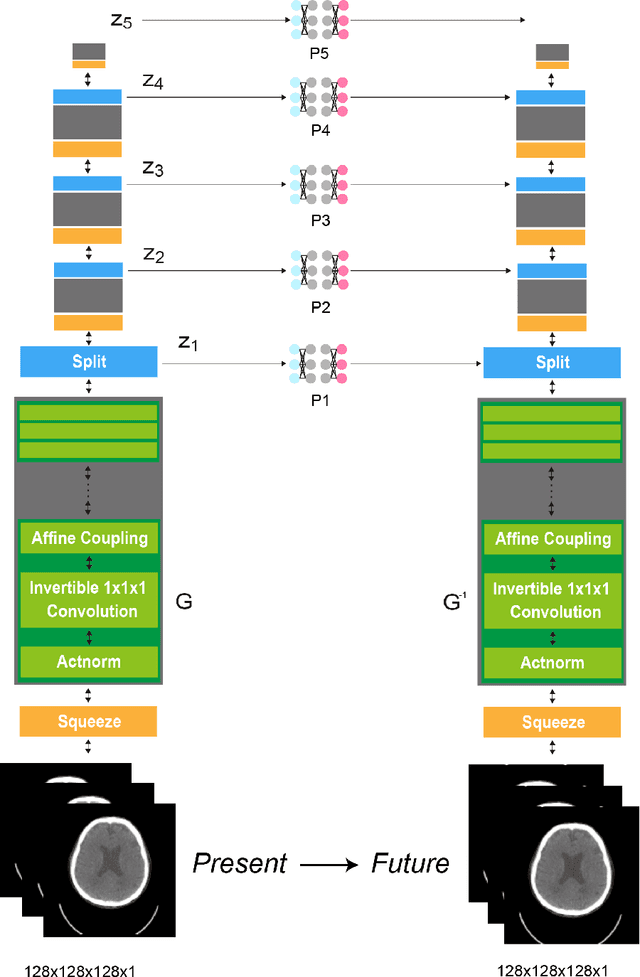
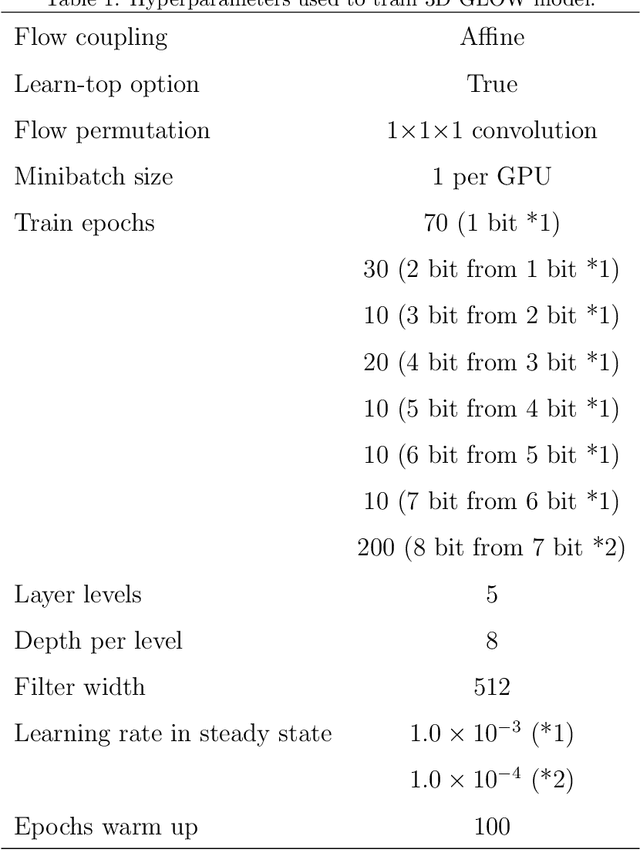
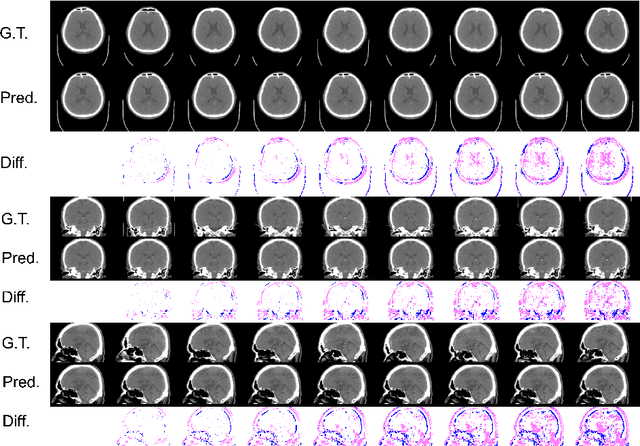
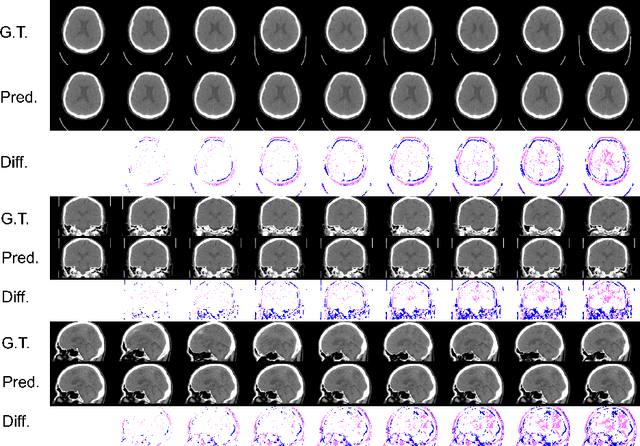
Abstract:From birth to death, we all experience surprisingly ubiquitous changes over time due to aging. If we can predict aging in the digital domain, that is, the digital twin of the human body, we would be able to detect lesions in their very early stages, thereby enhancing the quality of life and extending the life span. We observed that none of the previously developed digital twins of the adult human body explicitly trained longitudinal conversion rules between volumetric medical images with deep generative models, potentially resulting in poor prediction performance of, for example, ventricular volumes. Here, we establish a new digital twin of an adult human body that adopts longitudinally acquired head computed tomography (CT) images for training, enabling prediction of future volumetric head CT images from a single present volumetric head CT image. We, for the first time, adopt one of the three-dimensional flow-based deep generative models to realize this sequential three-dimensional digital twin. We show that our digital twin outperforms the latest methods of prediction of ventricular volumes in relatively short terms.
X2CT-FLOW: Reconstruction of multiple volumetric chest computed tomography images with different likelihoods from a uni- or biplanar chest X-ray image using a flow-based generative model
Apr 09, 2021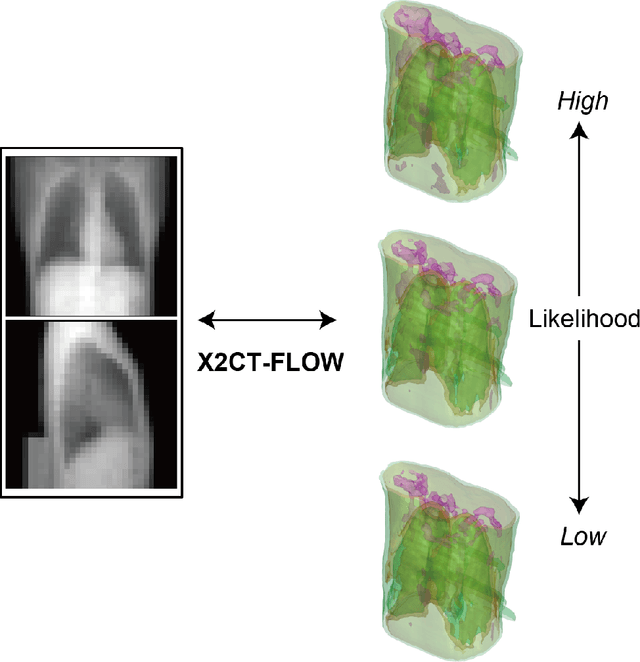
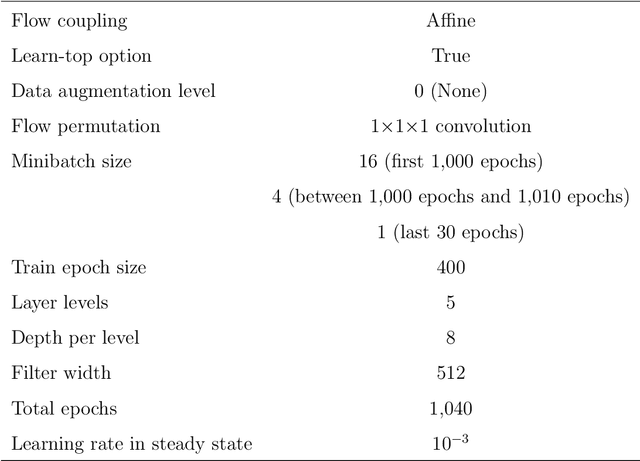

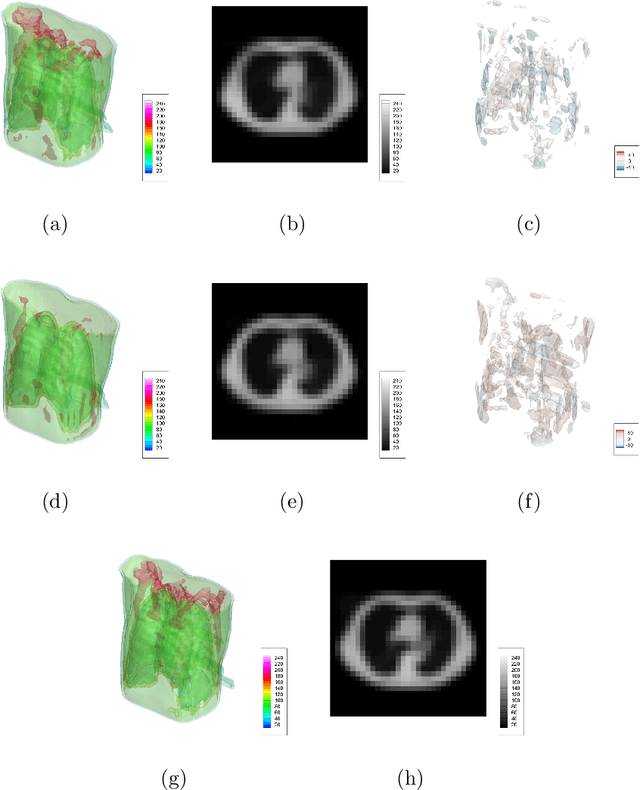
Abstract:We propose X2CT-FLOW for the reconstruction of volumetric chest computed tomography (CT) images from uni- or biplanar digitally reconstructed radiographs (DRRs) or chest X-ray (CXR) images on the basis of a flow-based deep generative (FDG) model. With the adoption of X2CT-FLOW, all the reconstructed volumetric chest CT images satisfy the condition that each of those projected onto each plane coincides with each input DRR or CXR image. Moreover, X2CT-FLOW can reconstruct multiple volumetric chest CT images with different likelihoods. The volumetric chest CT images reconstructed from biplanar DRRs showed good agreement with ground truth images in terms of the structural similarity index (0.931 on average). Moreover, we show that X2CT-FLOW can actually reconstruct such multiple volumetric chest CT images from DRRs. Finally, we demonstrate that X2CT-FLOW can reconstruct multiple volumetric chest CT images from a real uniplanar CXR image.
KART: Privacy Leakage Framework of Language Models Pre-trained with Clinical Records
Dec 31, 2020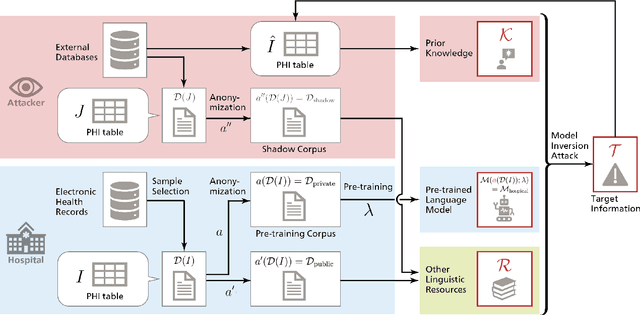

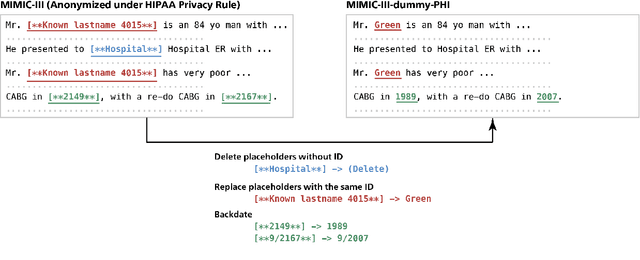

Abstract:Nowadays, mainstream natural language pro-cessing (NLP) is empowered by pre-trained language models. In the biomedical domain, only models pre-trained with anonymized data have been published. This policy is acceptable, but there are two questions: Can the privacy policy of language models be different from that of data? What happens if private language models are accidentally made public? We empirically evaluated the privacy risk of language models, using several BERT models pre-trained with MIMIC-III corpus in different data anonymity and corpus sizes. We simulated model inversion attacks to obtain the clinical information of target individuals, whose full names are already known to attackers. The BERT models were probably low-risk because the Top-100 accuracy of each attack was far below expected by chance. Moreover, most privacy leakage situations have several common primary factors; therefore, we formalized various privacy leakage scenarios under a universal novel framework named Knowledge, Anonymization, Resource, and Target (KART) framework. The KART framework helps parameterize complex privacy leakage scenarios and simplifies the comprehensive evaluation. Since the concept of the KART framework is domain agnostic, it can contribute to the establishment of privacy guidelines of language models beyond the biomedical domain.
On the Matrix-Free Generation of Adversarial Perturbations for Black-Box Attacks
Feb 18, 2020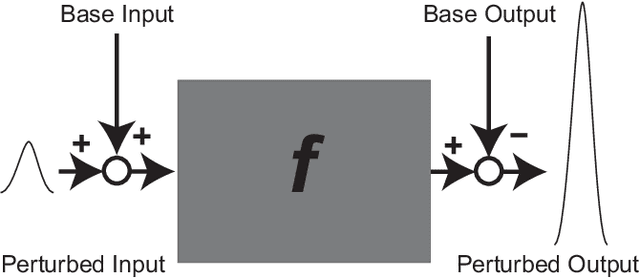
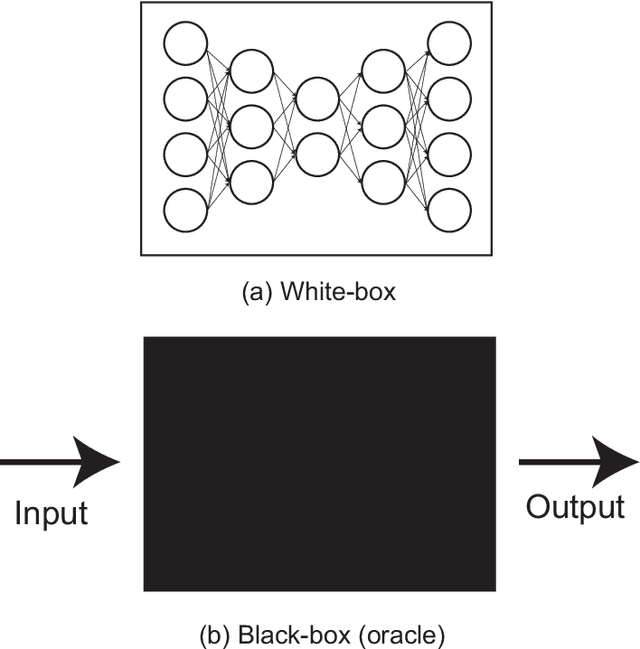
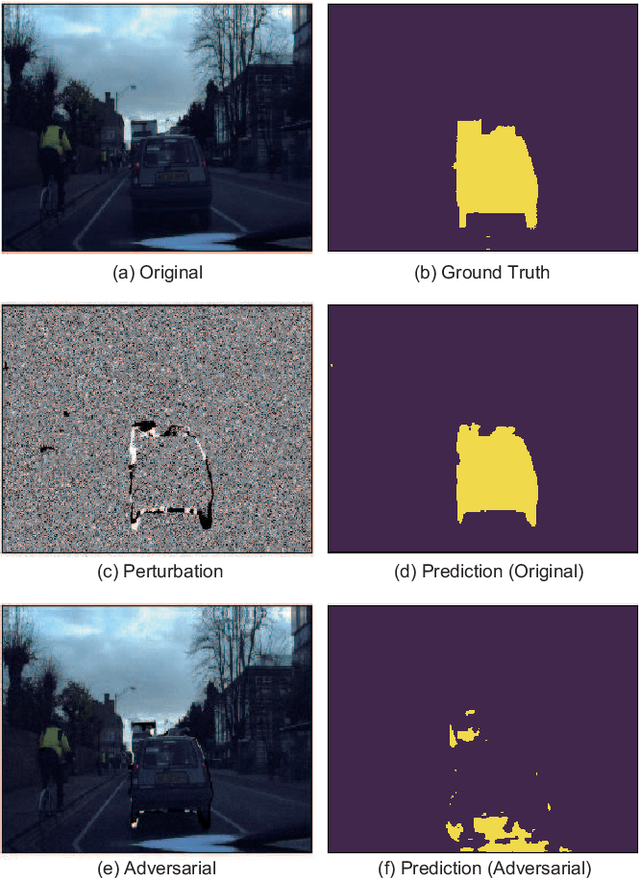
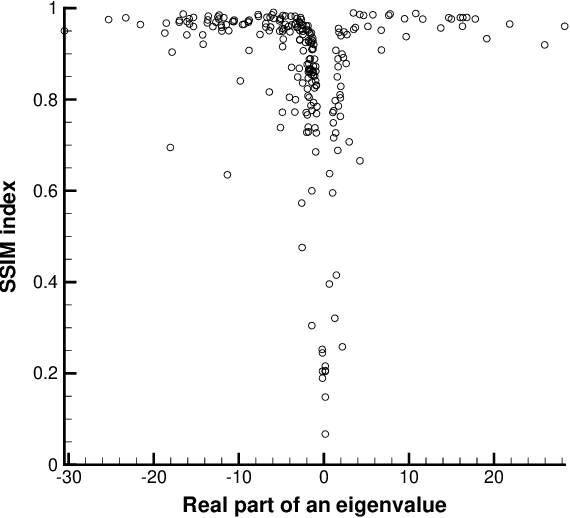
Abstract:In general, adversarial perturbations superimposed on inputs are realistic threats for a deep neural network (DNN). In this paper, we propose a practical generation method of such adversarial perturbation to be applied to black-box attacks that demand access to an input-output relationship only. Thus, the attackers generate such perturbation without invoking inner functions and/or accessing the inner states of a DNN. Unlike the earlier studies, the algorithm to generate the perturbation presented in this study requires much fewer query trials. Moreover, to show the effectiveness of the adversarial perturbation extracted, we experiment with a DNN for semantic segmentation. The result shows that the network is easily deceived with the perturbation generated than using uniformly distributed random noise with the same magnitude.
 Add to Chrome
Add to Chrome Add to Firefox
Add to Firefox Add to Edge
Add to Edge